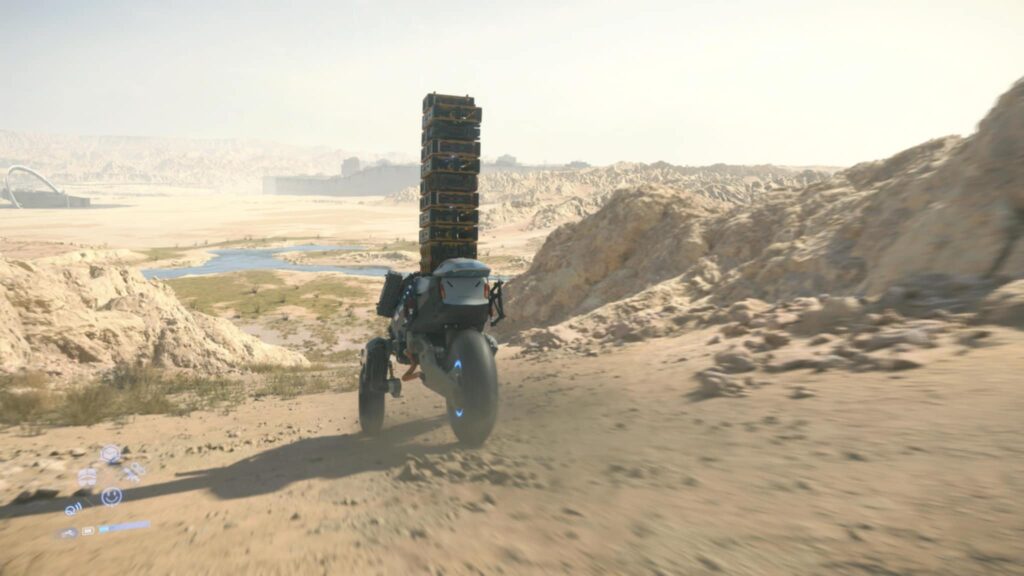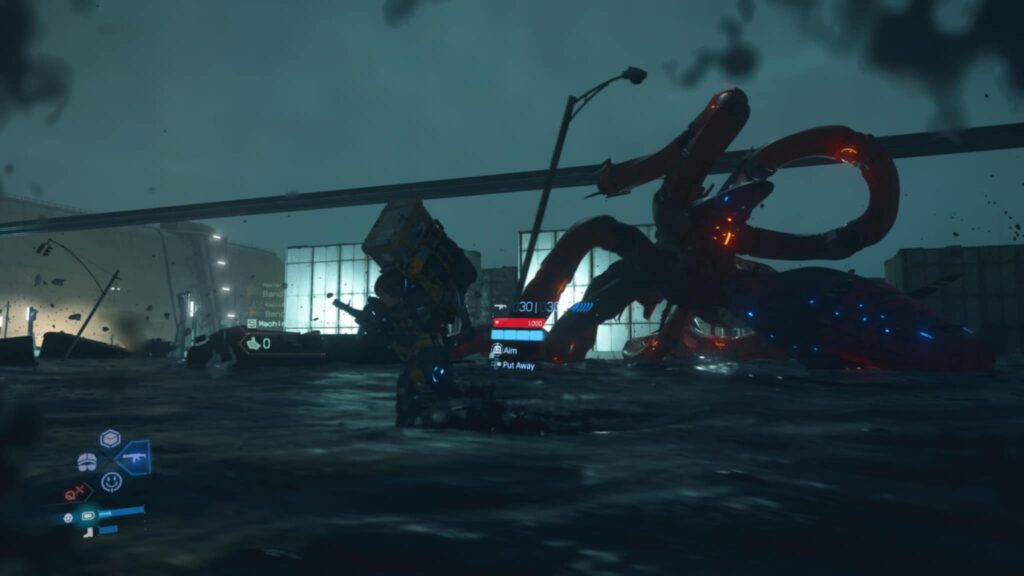Thinking back on the first time Death Stranded loaded into my all those years ago (My Death Stranding limited edition PS4 Pro), the game really did grab me from the get-go. While it is easy to see why some players would not gravitate to a franchise about delivering packages and trying not to trip and fall flat on their face, for me, this was exactly why the game was amazing. It was something that didn’t feel like a retread of common ideas, or something that had a place in the AAA gaming space until somebody crazy and well-liked like Hideo Kojima came along with a platform to make it work, for better or worse. For the most part, Death Stranding 2: On The Beach recaptures those emotions, feeling like a similar experience to the first but one that, aware of everything it had done before, strives to be better.
Thanks to Kojima being so weird and never wanting to paint a clear picture, most of us had no idea going into the first that it was going to be, even if the reviews started trickling in that the courier portions we had been showcased were much of it. This led to divisive reviews that there should have been little doubt would convert to positive over time. We saw it with the release of Death Stranding: Director’s Cut, when much of the buzz around it was how good the game is, with praise being heaped onto mechanics that were not among those added or improved, since the game was bringing in an even bigger audience than it had. The 90 on Metacritic for the sequel felt inevitable, warranted, and earned. A Correction for the past. But even now, one mechanic continues to feel out of place for me, the combat.

In fairness, Death Stranding 2: On The Beach has much better combat than its predecessor that does offer a more rounded amount of enjoyment, and while there are a lot of things that help it stand above, the one thing I would single out is the lack of grind to gain equal footing in combat. The first game had a large start area to explore, but also very little in the way of explanation. You could spend 20 hours easily running from point A to B delivering stuff, not realizing that a second area was unlocked for progressing the story that shoveled tools and weapons galore down your throat. Prior to that, enemy encounters had minimal in the way of recourse, pushing you into punching enemies down, which still feels weird, especially if you’re me and refuse to drop your packages. Sam can be a hapless main character, so the fact that he is actually VERY capable of beating down an entire while lugging 200 pounds of gear always felt like an oddity.
All of this was part of a fake-out in some part by Death Stranding, though, to paint this would of tech juxtaposed by the primitive nature of man, regressed to chucking electric staffs out while you run. In Death Stranding 2, Sam has already rebuilt the country, which was what gave bridges the capability to rebuild these weapons a vehicles, so why hide it from you? Sam still needs to unlock the gear, but the weapons that required hours upon hours before will be yours within the first few deliveries. This makes fighting enemies much easier, but Sam is never actually depicted as a fighter outside of you storming a camp so the fact he is so good at it, especially when he needs to be explained basic concepts of the company he works for like a novice, creates this disconnect in my mind between the Sam the story wants you to know, and the Sam you actually take control of. In a game with fourth wall breaking all around, the fact that this is glossed over feels like an oversight as well.
Death Stranding 2: On The Beach is at its absolute best when nothing is happening, and you are left with your own devices, and of course, a killer soundtrack, as you make your way from one safe area to the next, and for the most part, that is what you get here. Taking a break under a timefall shelter or aimlessly building a bridge that probably has no value, but I am going to build it anyway because I can. It’s the quiet, seemingly innocuous moments that Kojima Productions brought with such gusto that the inclusion of combat almost feels like a counterbalance to these ideas that often don’t get airplay; the combat is a necessity for broad, mass market appeal, not something that adds to what the experience aims to present to its audience.

BTs, the spectral monsters that can cause a crater to appear should they catch you, in particular, lose their luster, especially being given the tools to fight them early on. Your first introduction to them was a tense moment, which you needed to sneak past them, slowly but surely, avoiding their senses lest the whole thing turn into a panicked mad dash as the black tar attempts to slow your escape and the tar people pull you in. This time around, you’re given grenades (that have spotty accuracy to where you throw them) and you’re told to take them down on your way to a delivery. They lack the oomph that they did before, the moment when everything changes, as you see the pulsing of your warning light as you realize you are too far to turn back, and all that awaits is fear and dread. 40 hours in, and that moment, that impact, isn’t expanded on or even replicated; it is very much gone. Hey, I get it, a long game constantly making you stop and stealth through a pod of BTs wouldn’t be fun either, but there was a balance between the moments that feels lost this time around.
Boss fights also regress into the here is a big enemy, shoot it, mentality. This isn’t new either, but in a game where everything can be so round about in discovery, the fact that bosses are often presented straightforwardly without even a hint of problem-solving required leaves less of an impact on me than I want. Reminder, this is the guy who let you beat a boss by closing your game, adjusting the console’s clock by a week, then returning to the game for the reveal that the boss died of old age. Here, though, most stories of my conquest can be told with the immortal line of Frank Reynolds: “So anyway, I started blasting.” It doesn’t help that Sam’s dodge, which comes up a lot in these fights, again presents a character who should avoid fights as best he can. When you created such an addictive loop based on the joys of exploration, having to plot an assault on the enemy compound starts to feel like a break in the experience, like forced stealth missions might in other games, taking me away from everything I want to enjoy.
This isn’t to say that I am not enjoying Death Stranding 2: On The Beach; on the contrary, I am actually loving almost everything about it. Perhaps it is because of how much I am enjoying it that these glaring moments stand out to me more than they otherwise would. This isn’t about me hating the combat, cause even by the strictest terms, I really don’t. But the world is at its best when I’m worrying about repairing my shoes on a long trek, not when I have a gun in my hand, and while there is far more of the former, I question if there is even a need for the latter.
Remember to follow us on Twitter, Facebook, and Bluesky to keep up to date on everything we have going on!